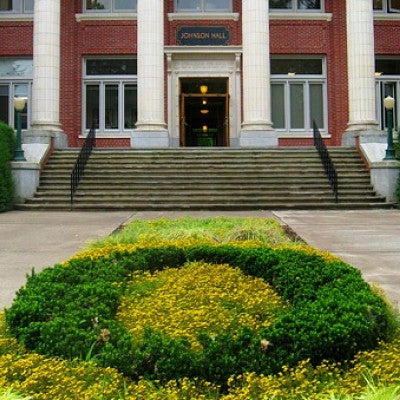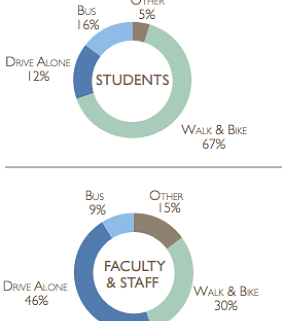
TRANSFERRED TO OTHER UNITS
Civil War Energy Bowl

To win, students and staff must produce the greatest amount of energy on their school’s elliptical machines. This graph shows the 2012 results. Over the five days of the competition, UO students and staff generated 21,600 watt-hours of energy compared to OSU’s 20,000 watt-hours. Together, both schools generated enough energy to power an average US home for a day and a half. The challenge garners local media attention every year. The 2013 Sustainability Survey revealed that the Civil War Energy Bowl was the Office of Sustainability initiative with which students are most familiar.
Commute Survey

Earth Tub

Green Revolving Loan Fund
Between October 2011 and December 2012, the University spent $1 million on a large-scale lighting retrofit project, replacing 33,000 T12 lamps with high performance T8 lamps in 60 campus buildings. During this time, the Office of Sustainability advocated for participation in the Billion Dollar Green Challenge, a national initiative to create green revolving loan funds of at least $1 million on college campuses.
A green revolving loan fund commits dollar savings from energy-efficiency projects to a fund that re-invests the savings in additional energy efficiency projects. The establishment of a green revolving loan fund at the University of Oregon would support the implementation of the Oregon Model for Sustainable Development.
Francis Dyke, former Vice President for Finance and Administration, signed the Billion Dollar Green Challenge on October 3, 2011 and committed the University of Oregon to creating its revolving loan fund within a year. Her successor, Jamie Moffitt, saw the opportunity to use the lighting retrofit project as a funding mechanism for establishing the University’s Green Revolving Loan Fund.
The University will set aside $100,000 in assumed energy savings annually for the next twenty years. Half will “re-pay” the internal loan. The other half will be made available to finance future energy efficiency projects. All of the energy savings will be used to supply new buildings with energy while keeping total campus building energy consumption at 2011 levels.
